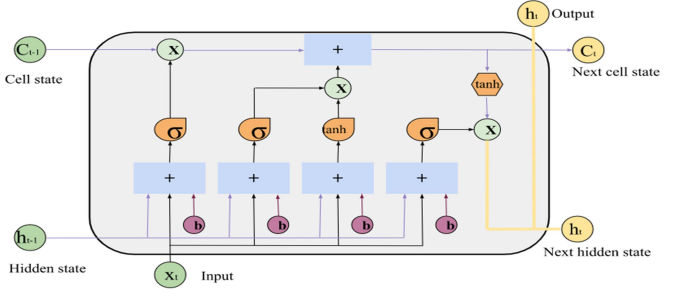Enhancing Mental Health Awareness through Twitter Analysis: A Comparative Study of Machine Learning and Hybrid Deep Learning Techniques
Main Article Content
Abstract
This study explores the utilization of social media data, specifically tweets and comments, for gaining insights into individuals' mental health conditions. The objective is to enhance mental health awareness and enable early detection and intervention. Twitter data is collected using depression-related keywords, and two models are employed: a Random Forest model with TF-IDF and a hybrid CNN-LSTM model incorporating word2vec. The performance of the CNN-LSTM model surpasses that of the Random Forest model, achieving an accuracy rate of 89.4%. Furthermore, a user interface is developed to analyze users' Twitter profiles based on their tweets, allowing for potential intervention through automated reply messages. By harnessing social media data and advanced machine learning techniques, this research contributes to improving mental health awareness and timely addressing of mental health concerns.
Article Details
References
Chatterjee R, Gupta RK, Gupta B. Depression detection from social media posts using multinomial naive theorem. IOP Conf Ser Mater Sci Eng. 2021;1022(1). doi: 10.1088/1757-899X/1022/1/012095.
Alorini G, Rawat DB, Alorini D. LSTM-RNN Based Sentiment Analysis to Monitor COVID-19 Opinions using Social Media Data. IEEE International Conference on Communications. 2021. doi: 10.1109/ICC42927.2021.9500897.
Basiri ME, Nemati S, Abdar M, Cambria E, Acharya UR. ABCDM: An Attention-based Bidirectional CNN-RNN Deep Model for sentiment analysis. Future Gener Comput Syst. 2021;115:279-294. doi: 10.1016/j.future.2020.08.005.
Behl S, Rao A, Aggarwal S, Chadha S, Pannu HS. Twitter for disaster relief through sentiment analysis for COVID-19 and natural hazard crises. Int J Disaster Risk Reduct. 2021;55. doi: 10.1016/j.ijdrr.2021.102101.
Kour H, Gupta MK. An hybrid deep learning approach for depression prediction from user tweets using feature-rich CNN and bi-directional LSTM. Multimed Tools Appl. 2022;81(17):23649-23685. doi: 10.1007/s11042-022-12648-y.
Hameed Z, Garcia-Zapirain B. Sentiment Classification Using a Single-LayeredBiLSTM Model. IEEE Access. 2020;8:73992-74001. doi: 10.1109/ACCESS.2020.2988550.
Alsagri HS, Ykhlef M. Machine learning-based approach for depression detection in twitter using content and activity features. IEICE Trans Inf Syst. 2020;E103D(8):1825-1832. doi: 10.1587/transinf.2020EDP7023.
Shetty NP, Muniyal B, Anand A, Kumar S, Prabhu S. Predicting depression using deep learning and ensemble algorithms on raw twitter data. Int J Electr Comput Eng. 2020;10(4):3751-3756. doi: 10.11591/ijece.v10i4.pp3751-3756.
Shetty NP, Muniyal B, Anand A, Kumar S, Prabhu S. Predicting depression using deep learning and ensemble algorithms on raw twitter data. Int J Electr Comput Eng. 2020;10(4):3751-3756. doi: 10.11591/ijece.v10i4.pp3751-3756.
Trotzek M, Koitka S, Friedrich CM. Utilizing Neural Networks and Linguistic Metadata for Early Detection of Depression Indications in Text Sequences. IEEE Trans Knowl Data Eng. 2020;32(3):588-601. doi: 10.1109/TKDE.2018.2885515.
Sarah Taher Y. Al- lami, Ali A. F. Al- Hamadani. (2023). Systematic Review for Comparison Type of Pulse Tube Refrigerator. International Journal of Intelligent Systems and Applications in Engineering, 11(4s), 625–633. Retrieved from https://ijisae.org/index.php/IJISAE/article/view/2740
Bhargava C, Poornima S, Mahur S, Pushpalatha M. Depression Detection Using Sentiment Analysis of Tweets. Turk J Comput Math Educ. 2021;12.
Kaur H, Ul Ahsaan S, Alankar B, Chang V. A Proposed Sentiment Analysis Deep Learning Algorithm for Analyzing COVID-19 Tweets. Published. doi: 10.1007/s10796-021-10135-7.
P. P. A. Performance Evaluation and Comparison using Deep Learning Techniques in Sentiment Analysis. J Soft Comput Paradigm. 2021;3(2):123-134.
Divyapushpalakshmi M, Ramalakshmi R. An efficient sentimental analysis using hybrid deep learning and optimization technique for Twitter using parts of speech (POS) tagging. Int J Speech Technol. 2021;24(2):329-339. doi: 10.1007/s10772-021-09801-7.
Joshi ML, Kanoongo N. Depression detection using emotional artificial intelligence and machine learning: A closer review. Mater Today Proc. 2022;58:217-226. doi: 10.1016/j.matpr.2022.01.467.
Kwame Boateng, Machine Learning in Cybersecurity: Intrusion Detection and Threat Analysis , Machine Learning Applications Conference Proceedings, Vol 3 2023.
Babu NV, Kanaga EGM. Sentiment Analysis in Social Media Data for Depression Detection Using Artificial Intelligence: A Review. SN Comput Sci. 2022;3(1). doi: 10.1007/s42979-021-00958-1.
Guntuku SC, Ramsay JR, Merchant RM, Ungar LH. Language of ADHD in adults on social media. J Attention Disord. 2019 Oct;23(12):1475-1485.
Almouzini S, Alageel A. Detecting Arabic depressed users from Twitter data. Procedia Comput Sci. 2019;163:257-265.
Yang K, Zhang T, Ananiadou S. A mental state Knowledge-aware and Contrastive Network for early stress and depression detection on social media. Inf Process Manag. 2022 Jul 1;59(4):102961.
Kang X, Shi X, Wu Y, Ren F. Active learning with complementary sampling for instructing class-biased multi-label text emotion classification. IEEE Trans Affect Comput. 2020 Nov 16.
World Health Organization. The World Health Report 2001: Mental health: new understanding, new hope.
Elbagir S, Yang J. Twitter sentiment analysis using natural language toolkit and VADER sentiment. InProceedings of the international multiconference of engineers and computer scientists 2019 Mar 13 (Vol. 122, p. 16).
Goyal P, Hossain KSM, Deb A, Tavabi N, Bartley N, Abeliuk A, Ferrara E, Lerman K. Discovering Signals from Web Sources to Predict Cyber Attacks. 2018.
Liu Q, He H, Yang J, Feng X, Zhao F, Lyu J. Changes in the global burden of depression from 1990 to 2017: Findings from the Global Burden of Disease study. Journal of psychiatric research. 2020 Jul 1;126:134-40.
Kwon HJ, Ban HJ, Jun JK, Kim HS. Topic modeling and sentiment analysis of online review for airlines. Information. 2021 Feb 12;12(2):78.
Wangsan K, Chaiear N, Sawanyawisuth K, Klainin P, Simajareuk K. Pattern of shiftwork and health status among nurses in a university hospital in Northeastern Thailand. Asia-Pacific Journal of Science and Technology. 2019 Jun 18;24(2).

